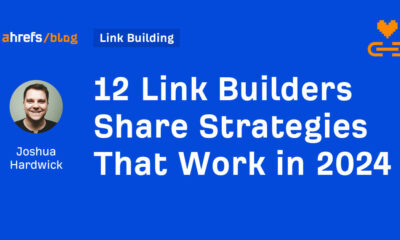MARKETING
6 strategies for using a DAM to manage modular content
The increased demand for high-quality content has marketers adopting a modular strategy. This means centralizing content files in a digital asset management (DAM) tool, able to be deployed in different combinations, depending on the channel or customer.
“The whole idea of modular content is to create content in blocks or sets which you can then repurpose and mix and match depending on the audience and the channel,” said Petra Tant, VP, product management, content cloud for content software company Aprimo at The MarTech Conference (scroll down to see video of the full session).
Read next: What is digital asset management?

Why use a modular content approach?
This method can save time during creation and allows more specific, or even personalized, content to be delivered to targeted audiences.
Personalization. Repurposing content saves time because you don’t have to start from scratch every time. This makes it faster to tailor content for specific segments. And easier to test and optimize based on the audience feedback.
Omnichannel. Faster creation means omnichannel experiences can go to market quicker. And the they can be channel-specific instead of generic.
Compliance and brand safety. In regulated markets, brands have to make sure they are compliant in what messages they deliver on specific channels.
“With many different groups involved in the creation of your content, the risk that content is created which is off brand or incorrectly used is high,” said Tant. “Modular content lessens the burden of regulatory or brand noncompliance by enabling the [repurposing] of already approved content and providing guidelines on how to reuse content.”


Building modular content
The core element of this process are graphics, videos and even blocks of text. These basic “atoms,” are combined to create “molecules” of related content. From there, content can be built into more complex and engaging experiences. Doing this requires having them in a centralized DAM.
Strategies for creating modular content using a centralized DAM
“This is about granular control of which content is applicable for which markets, regions, brands and channels,” Tant explained. “It’s about tracking what happens to your content. And above all, it’s going to be about measuring what value you get from your content – what content worked and what didn’t work.”
Avoid duplication. “If you want the DAM to track how content is performing, you really want to do that on one element and not on a multitude of duplicates,” said Tant.
Organizations that are rigorous with rooting out duplication are more successful in figuring out the right combination of elements. They drive more success with their content because they know which content is responsible for that success.
“You actually may not know that the duplicates exist in your dam and then your performance statistics will be incomplete and incorrect,” Tant added.
Build content relationships. Just as it’s important for brands to build relationships with customers, marketers also have to build relationships between the blocks of content that are centralized in their DAM.
“You should really track as many content relationships as possible,” said Tant. “Only by tracking the relationships between content you will be able to know which content blocks and sets are being used in final experiences.”
She added, “If a content block is being changed, which content is affected by it and where is that content currently published?”
Finished content experiences in ads, email campaigns or PowerPoint presentations should be added back into the DAM. When this happens, marketers on the team must have a way of knowing what original building blocks were used to make those experiences. They need to know the relationships between these content blocks.
Optimize metadata. Since modular content increases the amount of content objects in the DAM, metadata on the objects has to be very specific and helpful so that others can find, use and reuse these blocks.
“For DAM librarians today, managing metadata can already be a challenge,” said Tant. “My advice is to look at metadata management critically and optimize where you can.”
Grow into modular content. Start using your modular content strategy with new campaigns. Don’t bother with using a tech partner that decomposes campaigns from the past that weren’t using a modular content strategy, although there are tools like that out there.
Picking apart pieces of old content can create problems for content creators by overloading the DAM with duplicates or old blocks that won’t work as well with future content.
Connect source files in the DAM. Don’t just store a PDF of a completed project, make sure that the source of that PDF is also in the DAM.
Otherwise, you won’t be able to track back all of the individual content blocks used to create the finished project. And it’s those blocks you might need for the next successful content experience.
Expand your content. Store all content in your DAM, and not just the original blocks your team has created. If there are licensing restrictions on using content from other sources, those restrictions can and should be handled in the DAM through metadata.
“Evaluate what types of content that you’re using in experiences that are not currently part of your DAM,” said Tant. “We want to track where our content is used,how well it performed, and what the return on effort was.”
Get the daily newsletter digital marketers rely on.




















You must be logged in to post a comment Login